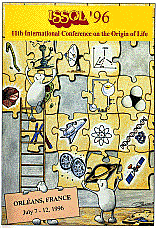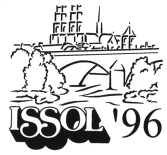THE ROOTING OF THE TREE OF LIFE: STILL AN OPEN QUESTION
This is the abstract of Pr. Patrick Forterre's lecture at the 11th International Conference on the Origine of Life, July 7-12 Orléans, France

THE ROOTING OF THE TREE OF LIFE: STILL AN OPEN QUESTIONThis is the abstract of Pr. Patrick Forterre's lecture at the 11th International Conference on the Origine of Life, July 7-12 Orléans, France | 
|
Here is a text version of the abstract:
Otherwise take a look at the graphic display of the abtract
THE ROOTING OF THE TREE OF LIFE: STILL AN OPEN QUESTIONPatrick Forterre Institut de Génétique et Microbiologie, Université Paris-Sud, Centre d'Orsay, 91405, Orsay Cedex, France, Fax: 33 169 4178 08, e-mail: forterre@igmors.u-psud.fr
Comparison of the molecular biology and central metabolism between
Bacteria, Archaea and Eucarya is expected to help in reconstituting the last
common ancestor to all extant cellular life, the cenancestor. Fulfilling this
expectation requires a rooted universal tree of life, in order to determine if
common traits shared specifically by two domains are primitive features,
absent in the third one, or shared derived traits, testifying for a common
history of two domains to the exclusion of the third one. Two studies,
based on phylogenetic analyses of pairs of paralogous proteins (elongation
factors, V and F-ATPases), have rooted the universal tree in the bacterial
branch. This rooting has been widely acclaimed and is now systematically
used in review papers and even textbooks. It fits well with the procaryotic
dogma (eucaryotes emerged from procaryotes), it explains the finding of
eucaryal features in Archaea (the two groups are in the same clade) and it
supports the hot origin of life hypothesis.
Brown, J.R. and Doolittle, W.F. 1995, Proc. Natl. Acad. Sci. USA 92, 2441. Forterre, P. 1995, C. R. Acad Sci, Paris, 318, 415. Forterre, P. et al. 1993, Nature, 362, 795. Forterre, P., et al., 1993, Biosystem, 28,15. |
 |
|
|















|